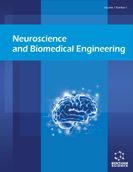Abstract
Background: Disability can be defined as a condition that may limit an individual's ability to use a particular limb or part of the body. Disability in the lower limb may be the consequence of a stroke, an accident, infection or can be congenital. This results in increased or total inability to perform everyday tasks. Rehabilitation procedures aim to help patients regain control of their everyday tasks with short-term intervention or life-time assistive support, based upon the kind of limb infarction.
Objective: Present review aims to cite the neuro-rehabilitation methods that support recovery in lower limb function. Articles were screened based upon the inclusion criteria of lower limb motor actions and its genesis being recorded, primarily from the sensorimotor areas of the brain. Studies using electroencephalography (EEG) as the non-invasive method for brain data acquisition only were included.
Results: The detailed analysis of 27 studies was performed after grouping them according to the methodological approach followed. Of all the studies selected, 16 of those corresponded to lower limb motor actions being performed while sitting, whereas only 11 reported the actions during actual bipedal locomotion. Only five interfaced the neuronal signals with electromechanical devices for practical implementation of the rehabilitation procedure.
Conclusion: Qualitative analysis showed that neural rehabilitative procedures does induce plasticity in human brain, but a critical analysis in hospitals or outside environment is necessary to verify the approaches. Future prospects suggest the targeted use of EEG based rehabilitative procedure to uphold the present findings.
Keywords: Brain Machine Interface (BMI), Electroencephalography (EEG), lower limb, neuro-rehabilitation, orthoses, prostheses.
Graphical Abstract
 7
7 4
4 2
2 1
1

